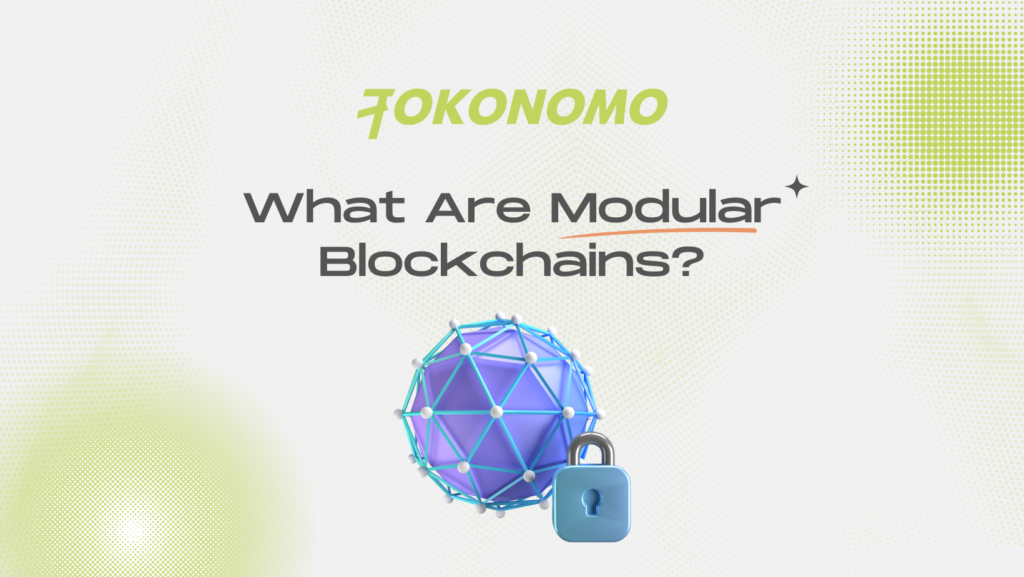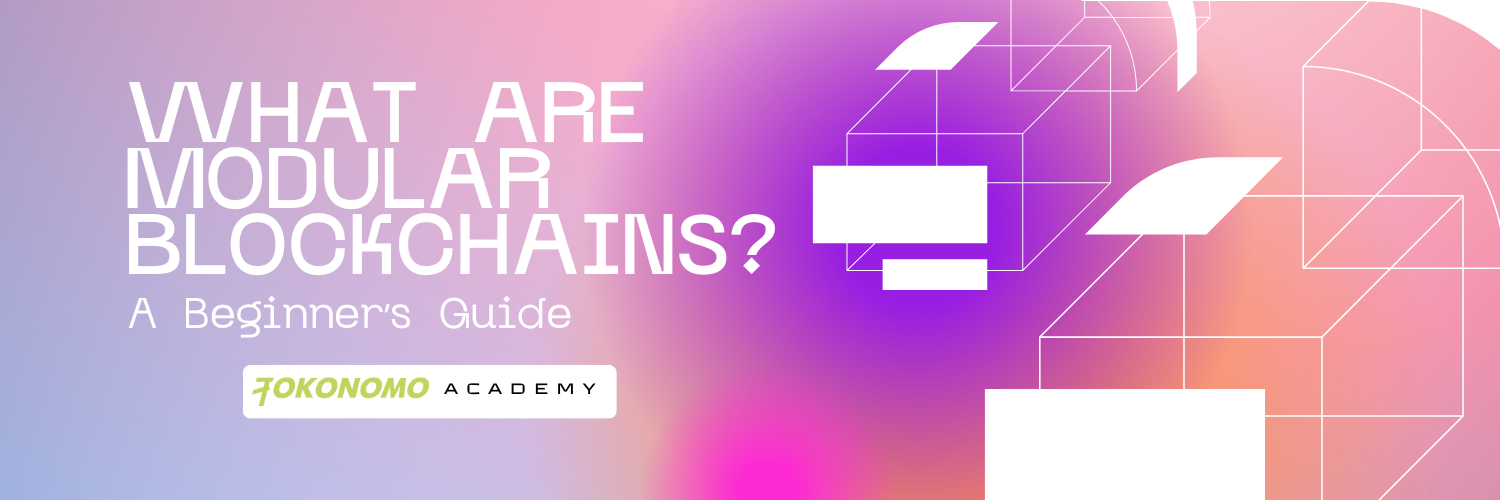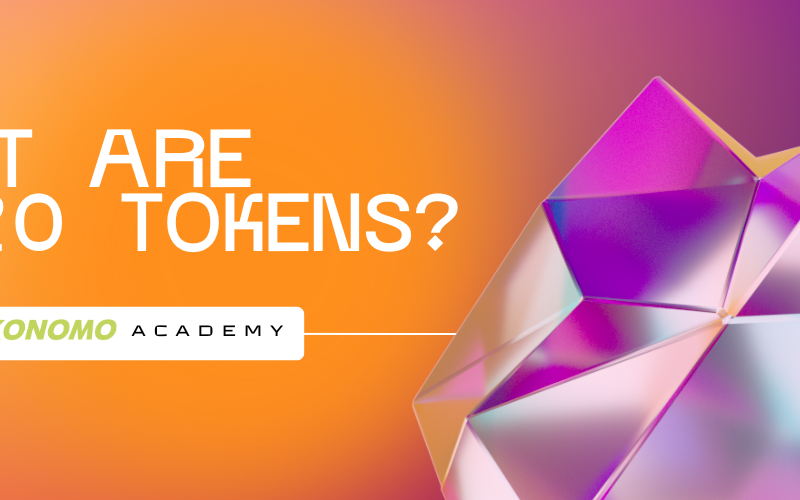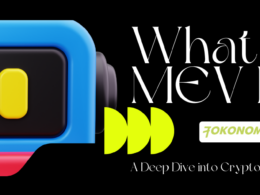Since its inception, the blockchain space has experienced substantial growth, with developers constantly exploring ways to improve scalability, security, and decentralization. The traditional monolithic approach, which relies on a single chain for all functions, often encounters difficulties in scalability, upgradability, and the hardware demands of validator nodes. In light of these challenges, the idea of modular blockchains has emerged as a compelling alternative.
What Are Modular Blockchains?


Modular blockchains represent a significant shift away from the traditional monolithic blockchain model. They embrace a multi-layered architecture that breaks down core tasks into specialized functions. Through this approach, modular blockchains assign distinct functions to separate layers, aiming to establish a system that is not only more scalable and customizable but also upholds principles of decentralization and security.
How Does Modular Blockchains Work?
Modular blockchains typically function by specializing in four key operations: transaction execution, settlement assurance, consensus validation, and data availability storage. Transaction execution entails processing transactions, settlement ensures the security of transaction destinations, consensus validates transaction authenticity, and data availability involves storing transaction data. This modular architecture provides increased flexibility and efficiency, presenting a promising resolution to the blockchain scalability trilemma.
Directions of Modular Networks
There are various methods available for implementing modular blockchains, each with its own distinct characteristics. Among these methods, notable examples include rollups, validium, and sovereign rollups.
- Rollups serve as an execution layer, responsible for processing transactions and broadcasting data to a layer-1 network (L1).
- Validium, a variant of rollups, processes transactions off-chain before sending the data to the L1. It also relies on a network of Proof of Stake validators.
- Sovereign rollups set themselves apart by functioning as both an execution and settlement layer, directly publishing data blocks onto the rollup. They do not require L1 smart contracts for validation.
Advantages and Disadvantages of Modular Blockchains
The adoption of a modular blockchain architecture brings significant advantages over monolithic designs, including improved scalability, flexibility, and interoperability. However, despite these benefits, leveraging modular blockchains can introduce complexity, leading to a steep learning curve for both users and developers.


Advantages
- Enhanced scalability: Modular blockchains excel in scalability by offloading resource-intensive tasks to separate layers, allowing for greater overall throughput without compromising decentralization. This architectural approach enhances the blockchain’s ability to handle a larger volume of transactions efficiently.
- Flexibility and interoperability: Modular base layers are designed to be highly flexible, promoting interoperability among multiple layer-1 and layer-2 chains. This flexibility allows developers to run the Ethereum Virtual Machine (EVM) or other virtual machines of their choice, facilitating seamless interaction between different blockchain networks.
- Versatile application development: The modularity of blockchains supports the development of universal applications, reducing friction for users in the blockchain ecosystem. This versatility encourages the creation of a broader range of secure and efficient decentralized applications (DApps), catering to diverse user needs.
- Customizable tech stacks: Developers have the freedom to choose the virtual machine that best suits their needs, providing a customizable tech stack. This flexibility enables developers to optimize their applications for performance, security, and other specific requirements, contributing to a more adaptable and developer-friendly environment.
Disadvantages
- Complexity in development: Building on modular blockchains can be more challenging compared to monolithic counterparts. The modular architecture introduces additional complexity, which poses a steep learning curve for both users and developers. This complexity can potentially slow down adoption and development efforts.
- Limited testing: Modular networks are not as battle-tested as their monolithic counterparts like Ethereum or Bitcoin. The extensive testing and validation that established chains have undergone are yet to be replicated in the modular landscape. This lack of testing raises concerns about the resilience of modular blockchains under real-world, high-traffic conditions.
- Early stage development: Modular blockchain development is still in its infancy. While the market has shown enthusiasm for these innovative solutions, these networks lack the extensive real-world testing and validation that comes with maturity. This early stage may introduce uncertainties about the long-term stability and effectiveness of modular blockchains, highlighting the need for further development and testing.
Examples of Modular Blockchains
Dymension
Dymension is a network comprising easily deployable and fast modular blockchains known as RollApps. It operates much like a traditional full-stack web application, with the RollApps network serving as the front-end for user interaction, while Dymension acts as the back-end, overseeing the ecosystem. Furthermore, there are data availability networks that serve as databases, supplying data as needed.
Celestia
In the realm of modular blockchains, Celestia emerges as a versatile network enabling secure scalability for blockchains without sacrificing performance. Rollups and layer-2 networks can leverage Celestia to ensure transaction data accessibility for all, alongside the advantages of swift and efficient data availability. To realize this vision, Celestia incorporates various features, including data availability sampling and sovereign rollups. Through data availability sampling, Celestia can expand its block size as its network attracts more nodes.
Conclusion
The flexibility and compatibility provided by modular blockchains could lead to a decentralized ecosystem that is both more efficient and secure. Modular networks could eventually facilitate a wider variety of DApps and use cases, potentially propelling DeFi to greater heights. As development teams concentrate on addressing the scalability trilemma, the utilization of modularity in the crypto sphere is anticipated to grow.











